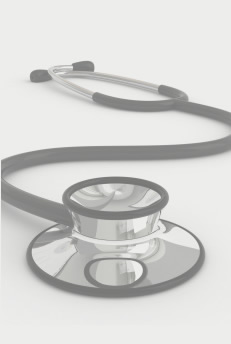
Microbiology and Parasitology is a medical specialty that has been expanding and reaffirming its identity and abilities from the moment of its creation, gaining top-class scientific and professional prestige and major international recognition.
The work of microbiologists also has a direct impact on the health of the community and their work is the most reliable source for discovering the origins of infectious diseases and the ever-changing microbial populations while identifying new pathogens and documenting patterns of resistance of microorganisms to anti-microbial agents.
The main objective of the Microbiology Department of CDB (Biomedical Diagnostic Clinic) is to provide all the necessary information for the prevention, diagnosis, treatment and monitoring of infectious diseases, using the latest scientific advances in the fields of bacteriology, virology, mycology and parasitology. In addition to using the classic culture, antibiogram, serology methods etc., it also uses the latest generation of molecular biology techniques, such as nucleic acid amplification, detection, quantification, sequentiation and phylogenetic analysis.
The microbiology and parasitology specialists from the Microbiology Department are all university professors who can offer a clinical and technical assessment of complex problems. The department is divided into two sections (bacteriology and virology) and one unit (parasitology) which cover ambitious medical care, research and teaching objectives. It is currently a point of referral for different medical care and research fields, including diagnosis and surveillance of influenza and other respiratory viral infections, diagnosis of leptospirosis and Chagas disease, typification of enteropathogenic E. coli, microbiological screening of organ donors and programs to eradicate measles, mumps and rubella among the population of Catalonia.
Medical care
Bacteriology section
Organized into work areas that include:
- Respiratory samples: diagnosis of infections caused by respiratory pathogens.
- Blood cultures and sterile body fluids: etiological diagnosis of sepsis and the diagnosis of bacterial meningitis and other body fluid infections.
- Miscellaneous swab and drainage cultures: this area deals with the diagnosis of various syndromes and infectious processes from a wide variety of pathological samples.
- Urine tests: urine sediment tests and urine cultures.
- Stool tests: etiological diagnosis of acute enteritis and Clostridium difficile toxin detection.
- Sexually transmitted diseases: etiological diagnosis of genital infections.
- Mycobacteria: diagnosis of tuberculosis. The Mycobacteria Unit has special facilities and biosafety measures.
- Antibiogram: determination of the sensitivity to anti-bacterial and anti-fungal agents.
- Epidemiology: study of the genetic relationship between bacteria to research epidemic outbreaks.
- Mycology: diagnosis of mycoses.
Virology section
Capable of providing analytical services for any type of viral infection-related diagnosis via a quick, specific and sensitive diagnosis using both new technologies and traditional virology technologies, —many of which are still at the reference stage—, and automating processes as much as possible.
Based on technological considerations, the section is divided into five areas:
- Automated serology
- Manual serology
- Direct antigen detection in pathological samples.
- Cell culture and molecular biology, an area in which both qualitative and quantitative nucleic acid amplification techniques and sequentiation methods are used to detect antiviral resistance mutations.
At present, the Virology Unit is capable of detecting up to 35 different viruses using more than 80 markers for the diagnosis, monitoring, prognosis and evaluation of the therapeutic efficacy of viral infections. The Parasitology Unit uses parasitology, immunology and molecular methods to diagnose the main autochthonous, imported, nosocomial (in immunocompromised patients) and zoonotic parasitoses.
Research
In terms of research, the various sections undertake important, highly prestigious activities in the form of projects designed in-house or conducted in conjunction with national and international groups.
Research is based primarily on major microbiology knowledge transfer within the clinical sphere, with the main areas of research including:
- The development of new diagnostic techniques
- Knowledge of the pathogenesis of infectious diseases
- Molecular basis of resistance to anti-microbial agents
- Imported microorganisms
- New pathogens
The main lines of research are:
- Mechanisms of resistance in M. tuberculosis.
- Molecular basis of antibiotic resistance in multidrug-resistant bacteria.
- Design of new antimicrobial agents.
- Virological techniques for the diagnosis of respiratory infection.
- Diagnostic and monitoring markers for viral infection in immunosuppressed patients.
- Pathogenesis of Hepatitis B and C viruses.
Teaching
Members of the Microbiology Department actively participate in the training of Microbiology and Parasitology Specialty Residents and under- and post-graduate Medical degree teaching at the Faculty of Medicine (Universidad de Barcelona). The department also takes in residents from other hospitals on secondment and national or foreign specialists and graduates wishing to broaden their training.
